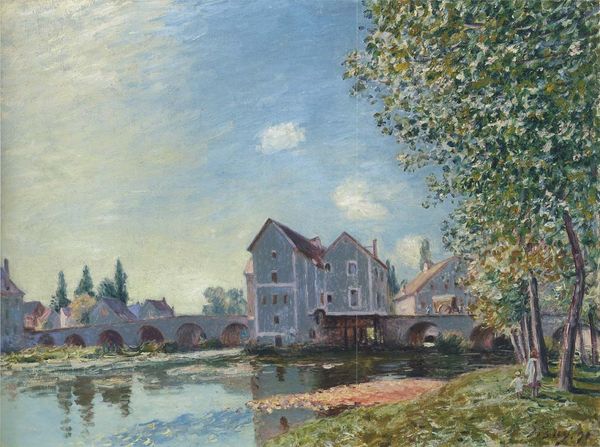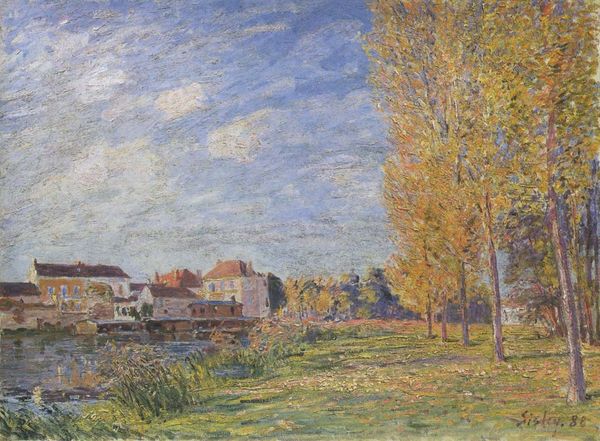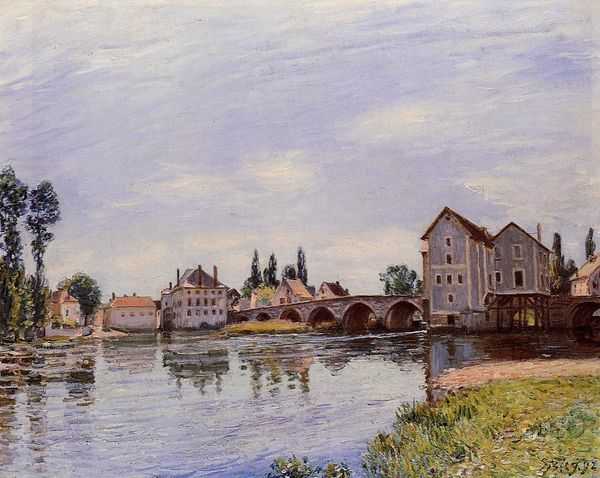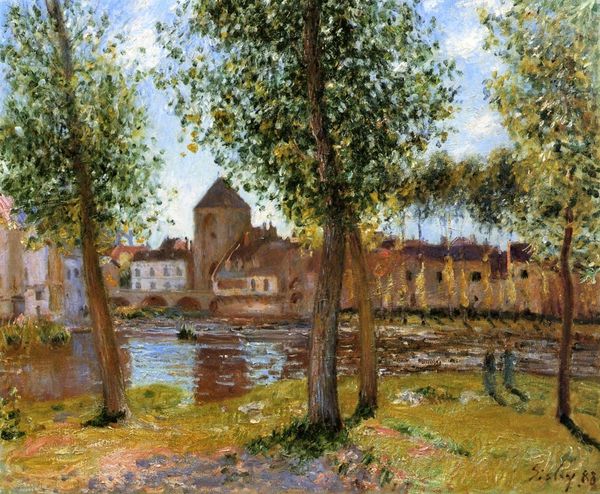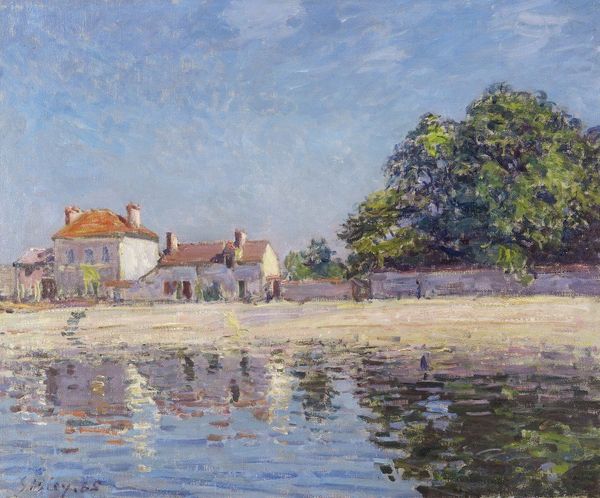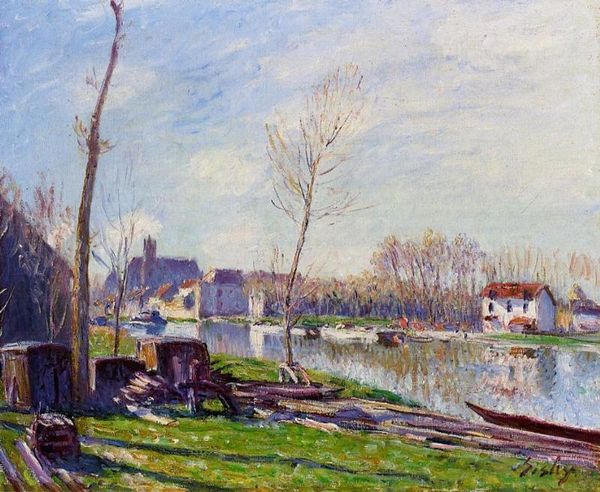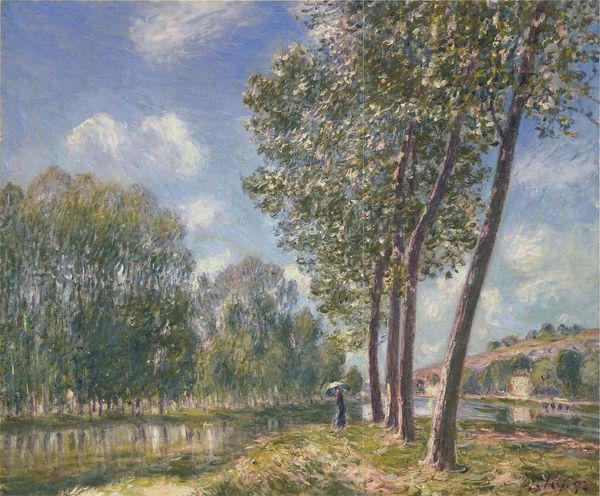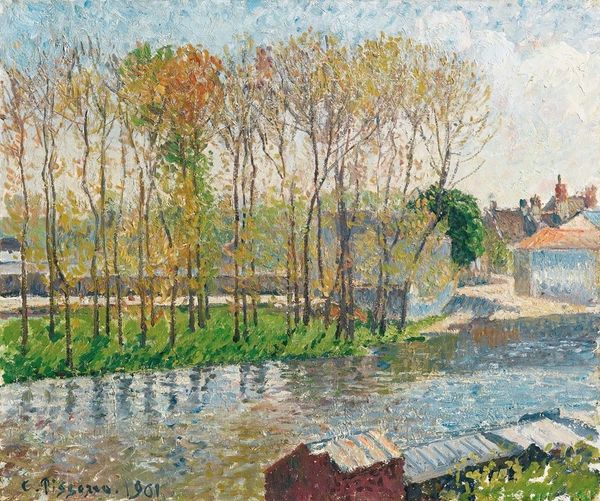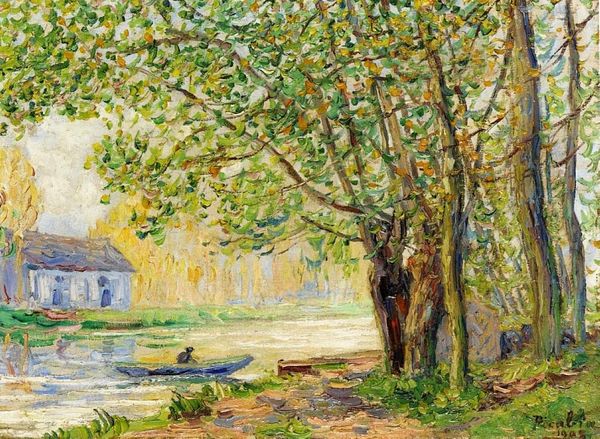
painting, plein-air, oil-paint
#
tree
#
rural-area
#
painting
#
impressionism
#
plein-air
#
landscape
#
oil-paint
#
landscape
#
house
#
impressionist landscape
#
oil painting
#
cityscape
#
building
Dimensions: 60 x 73 cm
Copyright: Public domain
Editor: Here we have Alfred Sisley’s “Moret sur Loing,” an oil on canvas from 1888. It feels peaceful, almost dreamlike. The reflections in the water are so delicate. What stands out to you in terms of its visual language? Curator: Note how Sisley manipulates the picture plane. The verticality of the trees at the fore is juxtaposed against the horizontality of the river and buildings, creating a sense of depth, while simultaneously flattening the space. Consider also the subtle variations in the chromatic scale: observe how the blues in the sky subtly transition into the reflected hues in the water. What do you make of it? Editor: I see what you mean about the colors. They create this beautiful harmony, but it's not entirely naturalistic. The reflections are almost stylized. Curator: Precisely. He’s not merely replicating nature, but reinterpreting it through the application of paint. Note how Sisley uses broken brushstrokes to capture the light and atmosphere, lending a sense of movement and impermanence. Observe the textured surfaces of the buildings against the smoothness of the river. Does this contrast speak to you? Editor: Yes, that textural contrast gives the buildings a real presence, even with the soft light. So, the composition and brushwork are actively constructing this serene feeling? Curator: Indeed. It’s in the careful arrangement of forms, the interplay of light and shadow, and the materiality of the paint itself that Sisley conveys his subjective experience of this landscape. The brushstrokes form meaning. Editor: It’s amazing how much analysis comes from just looking closely at the paint and composition! Curator: It reveals the conscious artistry at play. This exploration has brought forward what may often be passed over, to reveal an engagement that lies within materiality.
Comments
No comments
Be the first to comment and join the conversation on the ultimate creative platform.
